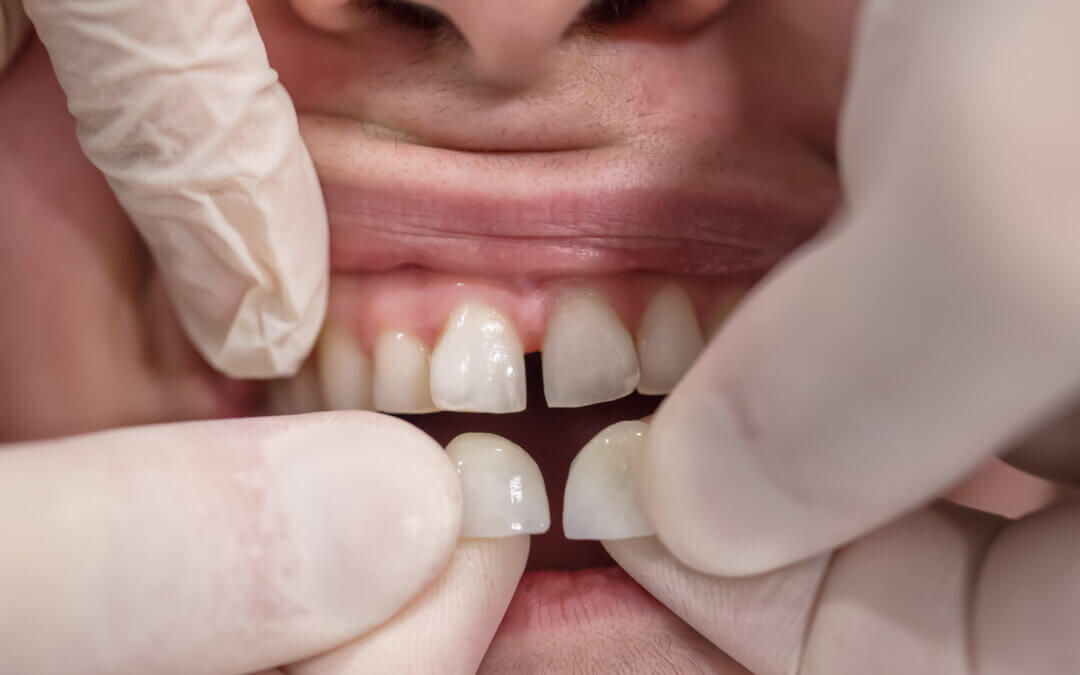How to Treat and Replace a Missing Tooth
There are several options to consider when looking to replace a broken or missing tooth, but knowing how to choose between them is key.
If you’re missing a tooth, you’re not alone. Did you know that 120 million Americans are missing at least one tooth?
Fortunately, that makes teeth replacements one of the most common dental practices out there. Let’s talk about some of your options to replace a missing tooth, how to choose the right materials, and where to find the care you need!
Replacement Options For a Missing Tooth
Before you replace a missing tooth, you may need to extract the root, have a root canal procedure, or more. If your teeth are missing, don’t expect to walk into the dentist’s office and walk out with a new tooth. This will likely require an initial consultation, scheduling of an initial procedure, impressions and/or fittings, and then replacing your tooth.
However, it’s important to understand the types of tooth replacement options available to you. Here are the most common.
Dentures and “Flippers”
Dentures are replacement teeth that you can remove at will. Conversely, flippers are a type of denture that you can flip in and out of place for proper care.
Generally, dentures and flippers are the best options for saving money. Dentures are the right option for anybody replacing most or all of their teeth, whereas flippers are right for replacing one or two.
While these are the most budget-friendly options by far, they require the most maintenance and care. They are also less structurally sound (especially flippers) than other replacements, so you will run the risk of breaking them.
Crown
If you have a broken tooth that’s still somewhat intact, you may only need a crown to fill in the remainder and make the tooth appear whole. If you’ve had a root canal or major tooth procedure, then you may already have a crown in your mouth.
Technically, every tooth replacement uses a crown. However, in this sense, a crown is a partial tooth replacement.
Also, due to the support of the existing tooth, partial crowns tend to be very strong and can last a lifetime.
Bridges
Bridges are full-sized crowns that your dentist can secure to surrounding teeth or gums. These are excellent for a missing tooth replacement, but they don’t last forever. On average, you can expect a bridge to last for five to seven years, with many lasting over 15 years.
Also, depending on the method of securing, bridges can damage surrounding teeth over the long run. This may not cause substantial damage, but it is a risk to keep in mind and discuss with your dentist!
Overall, bridges are one of the best and most common ways to replace teeth. Bridges are especially right for anybody missing one to three teeth in a row, as they cannot replace a full mouth.
Dental Implants
Without a doubt, dental implants are the best option for a missing tooth replacement. The crown is situated on an implanted titanium rod that’s meant to replace the root of your tooth. The implant is secured into your jaw bone, which can prevent bone loss and allow for a fully-functional tooth replacement.
While it is the most expensive option on this list, it’s a long-term investment. Dental implants can last a lifetime with proper care, so it’s a permanent solution. It’s possible that the crown will eventually break, but the implant itself is permanent.
Due to the high costs, dental implants are typically best for someone with one or two missing teeth. They do not have to be consecutive. However, if you can afford it, there’s nothing stopping you from a full mouth of dental implants.
Still, it’s important to remember that this is the most invasive procedure on this list. It will require a short recovery period after the procedure, and multiple visits with your dentist beforehand.
Don’t worry, the procedure is very safe, as this is one of the most common procedures dentists offer. Check to see if your dentist offers implant services today.
Choosing a Material
Regardless of what material you choose for your crown, remember that your dentist will fit your crown into your mouth to look as natural as possible. Here are the most popular crown materials.
Porcelain
Porcelain teeth resemble real teeth quite well, and your dentist can color-match the porcelain to your surrounding teeth for a seamless appearance. However, porcelain is one of the weaker materials, which means it isn’t great for replacing functional molars.
Ceramic
Ceramic teeth are fairly similar to porcelain, but a little stronger. You can also color-match ceramic teeth just like with porcelain.
Metal
Metal is the strongest material used for teeth replacements, but they aren’t as aesthetically pleasing as other materials. Still, if this isn’t a front tooth you need to replace, metal teeth will essentially last forever.
The most common metal is gold, but there are other options. You can talk to your dentist to learn more.
Fusions
You can get metal-reinforced porcelain or ceramic if you want the best of both worlds. This way, you can have the strength of metal with the appearance of color-matched porcelain or ceramic!
Bring Your Smile Back Today
Now that you know your options to replace a missing tooth, you can make an informed decision as to what’s right for you. There are no wrong options, so it’s entirely up to your situation, preferences, and budget. Consult with your dentist to see what’s right for you!
Stay up to date with our latest oral care tips, and don’t hesitate to contact us with any questions or for help replacing your tooth!


Recent Comments